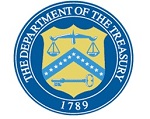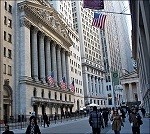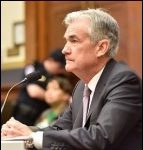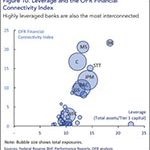-
Recent Posts
- The Professor Who Wrote the Seminal Book on Wall Street Megabanks Calls Today’s Financial System “Dangerously Unstable”
- Gold Has Set Historic Highs this Year as the Federal Reserve Has Reported Historic Losses
- Stanford Finance Professor Anat Admati Is Making Jamie Dimon Very Nervous – Again Calling His Bank “Dangerous”
- Jamie Dimon Dumped $150 Million of His JPMorgan Stock in February; Now He Says His Regulators Want 25 Percent More Capital at his Bank
- The Black Swan Rears Its Head: The Fed Has Negative Capital Using GAAP Accounting
- New York Fed Will Not Confirm or Deny that 5-Count Felon JPMorgan Chase Is Custodian of $2.4 Trillion of Its Securities
- For the First Time in History, the Fed Is Reporting Billions in Losses Weekly; It’s Still Paying High Interest Income to the Mega Banks on Wall Street
- There’s a Revival of the Dotcom-esque Froth in Today’s Markets; Cathie Wood Is Standing in for Henry Blodget and Jack Grubman; Nasdaq Is Playing Nasdaq
- Study Finds Wall Street Mega Banks Have Overstated Income for Years on Commercial Real Estate Loans They Sell to Investors
- Jamie Dimon Huddles in Private with Biden Bigwigs as His Bank Faces More Crime Charges
- Report: Five Banks Have a Combined Half Trillion Dollars in Commercial Real Estate Loans; Number 1 is JPMorgan Chase
- Billionaire Larry Fink of BlackRock, Which Grabbed Fed Bailouts in 2020-2021, Lectures Struggling Seniors on Making More Sacrifices
- Almost 10,000 U.S. Banks Have Disappeared Since 1985, Leaving 4 Mega Banks Controlling 39 Percent of Bank Assets
- Wall Street’s Go-To Law Firm, Sullivan & Cromwell, Got in Bed with Crypto; Now Its Reputation Is Being Hammered
- More Failed Banks and Office Building Demolitions Likely Before Real Estate Problems End, Warn Two Federal Agencies
- During Spring Bank Panic of 2023, Liquidity Advances from FHLBs Topped Those of Q4 2008, when Wall Street Was in Collapse
- JPMorgan’s Federally-Insured Bank Is Fined $348 Million for Losing Track of “Billions” of Trades
- Hedge Fund Titan John Paulson Made $1 Billion in an Illegal Goldman Sachs Deal; Trump Is Now Floating Him for Treasury Secretary
- Wall Street Mega Banks Have Drawn a Law-Free Zone Around Themselves – The Media Is Complicit
- A Financial Writer at New York Times Admits He’s Been Misrepresenting Bank Capital for 14 Years
- FDIC Data Contradicts Fed Chair Powell: Shows Real Estate Problems Have Skyrocketed at Largest U.S. Banks, Not the Smaller Regionals
- Senator Elizabeth Warren Calls Fed Chair Powell “Weak-Kneed”; Says He Is “Driving Efforts Inside the Fed” to Gut Higher Capital Requirements
- Steve Mnuchin, Trump’s Treasury Secretary/Foreclosure Kingpin, Joins with Hedge Fund Guys to Grab a Teetering, Federally-Insured Bank for $2 a Share
- Wall Street Mega Banks Have Created a Circular Firing Squad with Credit Derivatives and Capital Relief Trades – with the Fed’s Blessing
- New York Community Bancorp Was JPMorgan’s Top Regional Bank Pick for 2024; It’s Lost 73 Percent Y-T-D and Had Its Deposit Rating Downgraded to Junk
- Watchdog, Better Markets, Investigates the Bank that Has Lost 65 Percent of Its Market Value in Two Months and Was Downgraded to Junk by Moody’s
- The Fed Pretends to Send a Warning to Wall Street’s Mega Banks on Derivatives and Counterparty Risk
- $87 Million Buys This for Jamie Dimon: David Boies Can’t Utter the Words “JPMorgan Chase” in a Jeffrey Epstein Sex Trafficking Case
- Jamie Dimon and Nine of His Top Executives at JPMorgan Chase Have Dumped Over $150 Million of their JPMorgan Stock in Last Two Months
- These Charts Reveal Why the Fed Is Frightened about Capital Levels at the Wall Street Mega Banks
- Wall Street Law Firm Sullivan & Cromwell Gets Sued Over Allegations It Aided and Abetted the FTX Crypto Fraud
- JPMorgan Says Its “Trading Venues” Are Under Investigation While It’s Still on Probation for Prior Trading Crimes
- Jamie Dimon Is Desperate to Pin the Jeffrey Epstein Scandal on Jes Staley; Bloomberg News Is Carrying His Water — Again
- Citigroup Is Having a Very Bad Week; Regulators Are Breathing Down Its Neck
- Five Wall Street Banks Hold $223 Trillion in Derivatives — 83 Percent of All Derivatives at 4,600 Banks
- Jamie Dimon’s Statement Last Month that Trump “Was Kind of Right About NATO,” Sounds Even More Unhinged Today
- S&P 500 Sets a Record on Wednesday as Banks Continue Tanking
- NYCB Downgraded to Junk; Shocking Charts for Citigroup, Barclays and Deutsche Bank
- Reporters Who Ask Tough Questions at Fed Press Conferences Have a Habit of Being Disappeared from the Room
- Jamie Dimon Has Spent $117 Billion Propping Up JPMorgan’s Share Price with Buybacks in 10 Years; He’s Counting on Trump’s MAGA Crowd to Rescue Him
- Bank Fraud Enters a New Era: Bank-to-Bank Wire Transfers Loot Customers
- Senator Sherrod Brown Takes on the Fed’s Support of Wealth Stripping the Middle Class
- JPMorgan Chase Has Used the Same Auditor for 58 Years, Despite Giant Frauds at the Bank in the Last Nine Years
- The Fed Has a Dirty Little Secret: It’s Been Allowing the Wall Street Mega Banks to Calculate their Own Capital Requirements
- The Battle Over Capital at the Mega Banks Must Expand to Breaking Them Up
- Robert Kaplan Was Heavily Trading on May 1, 2020; One Day After a Fed Blackout Period and the Same Day He Made a Shocking Prediction on TV
- Naming Names: Professor Exposes the Banking Cartel that Has Hijacked U.S. Democracy
- A Fed Whistleblower Reveals Efforts to Silence Him 30 Years Ago
- The DOJ’s Incestuous Relationship with Jamie Dimon Is Captured in a Graphic from an Historic Lawsuit
- Everything that’s Dangerous about U.S. Banks Today in One Highly Readable Book
Search Results for: Repo crisis
The U.S. Treasury’s Financial Crisis Warning Bell Didn’t Ring Before the Repo Crisis of 2019 or This Year’s Bank Runs

By Pam Martens and Russ Martens: November 30, 2023 ~ The Office of Financial Research (OFR) is a unit of the U.S. Treasury Department. OFR was created as part of the Dodd-Frank financial reform legislation of 2010 to keep the Financial Stability Oversight Council (F-SOC) informed about emerging threats that have the potential to spread contagion throughout the U.S. financial system — as occurred in 2008 in the worst financial crash since the Great Depression. Janet Yellen, the U.S. Treasury Secretary, chairs F-SOC. Its members include the heads of every federal banking and Wall Street regulator, who meet regularly to assess any threats on the horizon that could lead to financial instability in the U.S. One of the data charts that OFR makes available both to F-SOC and the public to assess accelerating financial problems is its Financial Stress Index. OFR describes that index as follows: “The OFR Financial Stress Index … Continue reading
Internal Charts Show Treasury Agency Assigned to Measure Risk in U.S. Markets Slept through the Repo Crisis of 2019 and the Fed’s $19.87 Trillion Bailout

By Pam Martens and Russ Martens: July 7, 2022 ~ The Office of Financial Research (OFR), a unit of the U.S. Treasury Department, was created under the Dodd-Frank financial reform legislation of 2010. Its job is to prevent, through early warnings, the kind of catastrophic financial crisis that occurred in 2008 when irresponsible and corrupt practices on Wall Street toppled the U.S. economy; brought on the deepest financial crisis since the Great Depression; and left the taxpayer and Fed bailing out the Wall Street megabanks that would have otherwise collapsed from their own hubris. Unfortunately, the OFR was savagely gutted under the Trump administration. Today, OFR is like the cop on the beat that has been stripped of his whistle, his walkie-talkie and is wearing dark sun glasses on a cloudy day. One of the tools that the OFR is supposed to use to warn federal regulators that Wall Street is … Continue reading
The Repo Crisis, Jamie Dimon, and the Bloomberg News Mystery

By Pam Martens and Russ Martens: October 17, 2019 ~ Academics and historians who attempt to compare the epic Wall Street crash of 2007- 2010 to the next one that’s inevitably coming won’t be able to count on publicly available articles from Bloomberg News. As we reported on Monday, critical articles by a top investigative reporter at Bloomberg News, Mark Pittman, that exposed the corrupt cronyism between Wall Street and the Federal Reserve have gone missing on the Internet. Just this morning we located yet another key article from Bloomberg News that has just up and disappeared on the Internet. Put this 2008 Bloomberg headline in the Google search box with the quotes included and see what happens: “Citigroup Unravels as Reed Regrets Universal Model.” Bloomberg News informed us that Pittman’s articles are still available on the Bloomberg terminal. That’s a market data and news terminal that hundreds of thousands … Continue reading
Report: During Spring Banking Crisis, Banks Borrowed Over $1 Trillion from Federal Home Loan Banks — $100 Billion More than During the Crash of 2008

By Pam Martens and Russ Martens: November 8, 2023 ~ Yesterday, the regulator of the Federal Home Loan Bank system, the Federal Housing Finance Agency (FHFA), released a report on its recommended changes going forward. The report was in response to the questionable conduct of the Federal Home Loan Banks in the leadup to the banking crisis this past spring. The core mission of the 11 regional Federal Home Loan Banks is to “provide liquidity to their members to support housing finance and community development through all economic cycles.” In short, the Federal Home Loan Banks are supposed to make it possible for banks to provide home mortgages to low-income folks. The banks that failed this spring were engaged in crypto (Silvergate and Signature Bank), providing loans to the super wealthy (First Republic Bank), and in the case of Silicon Valley Bank, it was more of a Wall Street IPO pipeline. … Continue reading
Wall Street’s Crisis Began Four Months Before the First Reported Death from Coronavirus in China; Here’s the Proof

By Pam Martens and Russ Martens: March 19, 2020 ~ U.S. Treasury Secretary Steve Mnuchin and Wall Street pundits are all over cable news, repeating the mantra that “this is nothing like the last financial crisis,” while seeking to lay the blame for all of the newly-announced bailout measures for Wall Street at the feet of the coronavirus. But in terms of Wall Street privatizing profits and socializing losses, this is exactly like the last financial crisis. Wall Street’s crisis has a specific launch date: September 17, 2019. That’s when the Fed, for the first time since the last financial crisis, began dumping hundreds of billions of dollars a week into Wall Street’s trading houses. That program, called “repo loans,” now tallies up to more than $9 trillion in cumulative loans made to Wall Street at super-cheap borrowing rates. The first article we wrote on that Fed program was dated … Continue reading
The Fed Has 233 Secret Documents about JPMorgan’s Potential Role in the Repo Loan Crisis

By Pam Martens and Russ Martens: March 13, 2020 ~ The Federal Reserve Board of Governors has acknowledged to Wall Street On Parade that it has 233 documents that might shed some light on why JPMorgan Chase was allowed by the Fed to draw down $158 billion of the reserves it held at the Fed last year, creating a liquidity crisis in the overnight loan market according to sources on Wall Street. After taking four months to respond to what should have been a 20-business day turnaround on our Freedom of Information Act request, the Federal Reserve denied our FOIA in its entirety. (Our earlier request to the New York Fed resulted in the same kind of stonewalling. See The New York Fed Is Keeping JPMorgan’s Secrets Close to Its Chest.) The Wall Street liquidity crisis forced the Federal Reserve, beginning on September 17 of last year, to begin making … Continue reading
BIS Drops a Bombshell: Four U.S. Mega Banks Are Core of Repo Loan Crisis

By Pam Martens and Russ Martens: December 9, 2019 Yesterday, the Bank for International Settlements (BIS) dropped a bombshell report that torpedoed the Federal Reserve’s official narrative on what has caused the overnight lending market (repo loan market) on Wall Street to seize up since September 17, leading to more than $3 trillion in cumulative loans from the New York Fed as lender of last resort. The Federal Reserve has said the repo crisis was a result of corporations draining liquidity from the system to pay their quarterly tax payments alongside a large auction of U.S. Treasury securities settling and adding to the cash drain. That excuse was clearly bogus since the Fed has provided hundreds of billions of dollars weekly into the repo market since September 17, while stating that it plans to continue this activity into next year. The BIS report dropped the bombshell that the “US repo … Continue reading
The Repo Loan Crisis, Dead Bankers, and Deutsche Bank: Timeline of Events

By Pam Martens and Russ Martens: September 30, 2019 ~ Last week, as the Fed was carrying out hundreds of billions of dollars in emergency loan operations on Wall Street for the second week in a row – the first such operations since the financial crisis – Deutsche Bank’s headquarters office in Frankfurt, Germany was being raided by police for the second time in less than a year. That’s not the sort of thing that inspires confidence among depositors to keep their money in your bank. Deutsche Bank has been a constant headache for the U.S. financial system because it is heavily intertwined via derivatives with the big banks on Wall Street, including JPMorgan Chase, Citigroup, Goldman Sachs, Morgan Stanley and Bank of America. It has become the dark cloud on the horizon in the same way Citigroup cast a negative pall in the early days of the financial crisis … Continue reading
GAO Report: Cost of the Financial Crisis — Your Retirement
By Pam Martens: February 19, 2013 The Government Accountability Office (GAO) has released a devastating appraisal of the financial toll the 2007 to 2009 Wall Street financial crisis has had on the U.S. economy and workers. According to the GAO, cumulative output losses could exceed $13 trillion with another $9 trillion in losses in household wealth through declines in home equity, bringing just those two areas of losses to potentially $22 trillion. The study notes that it can’t quantify losses in financial assets since the stock market has regained much of its lost ground but many people as well as portfolio managers of pensions and retirement assets locked in their losses by selling as the market dived. The report indicates that the steep decline in home values during the financial crisis left homeowners collectively holding home mortgage debt in excess of the equity in their homes, marking a first since the … Continue reading
Gold Has Set Historic Highs this Year as the Federal Reserve Has Reported Historic Losses

By Pam Martens and Russ Martens: April 17, 2024 ~ According to Federal Reserve data, for the first time in its history, the Fed has been losing money on a consistent basis since September 28, 2022. As of the last reporting date of April 10, those losses came to a cumulative $162.9 billion. As the chart above from the Fed indicates, the monthly losses thus far in 2024 have ranged from a high of $13.4 billion in January to $5.5 billion in March. We are not talking about unrealized losses on the debt securities the Fed holds on its balance sheet, which it acquired under its various Quantitative Easing programs. (The Fed does not mark to market the gains or losses on those securities on the basis that it plans to hold them to maturity.) We’re talking about real cash operating losses the Fed is experiencing from earning approximately 2 percent interest on … Continue reading

